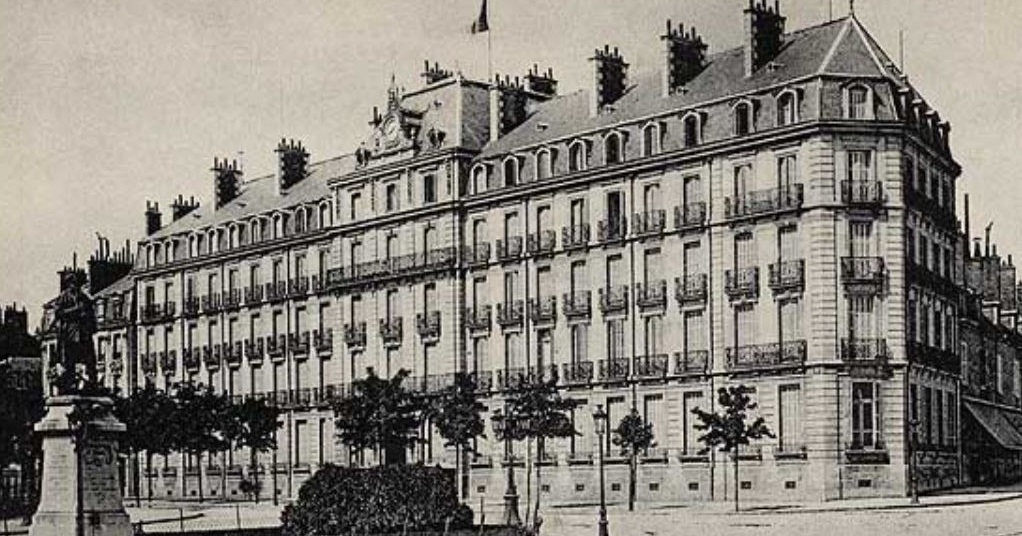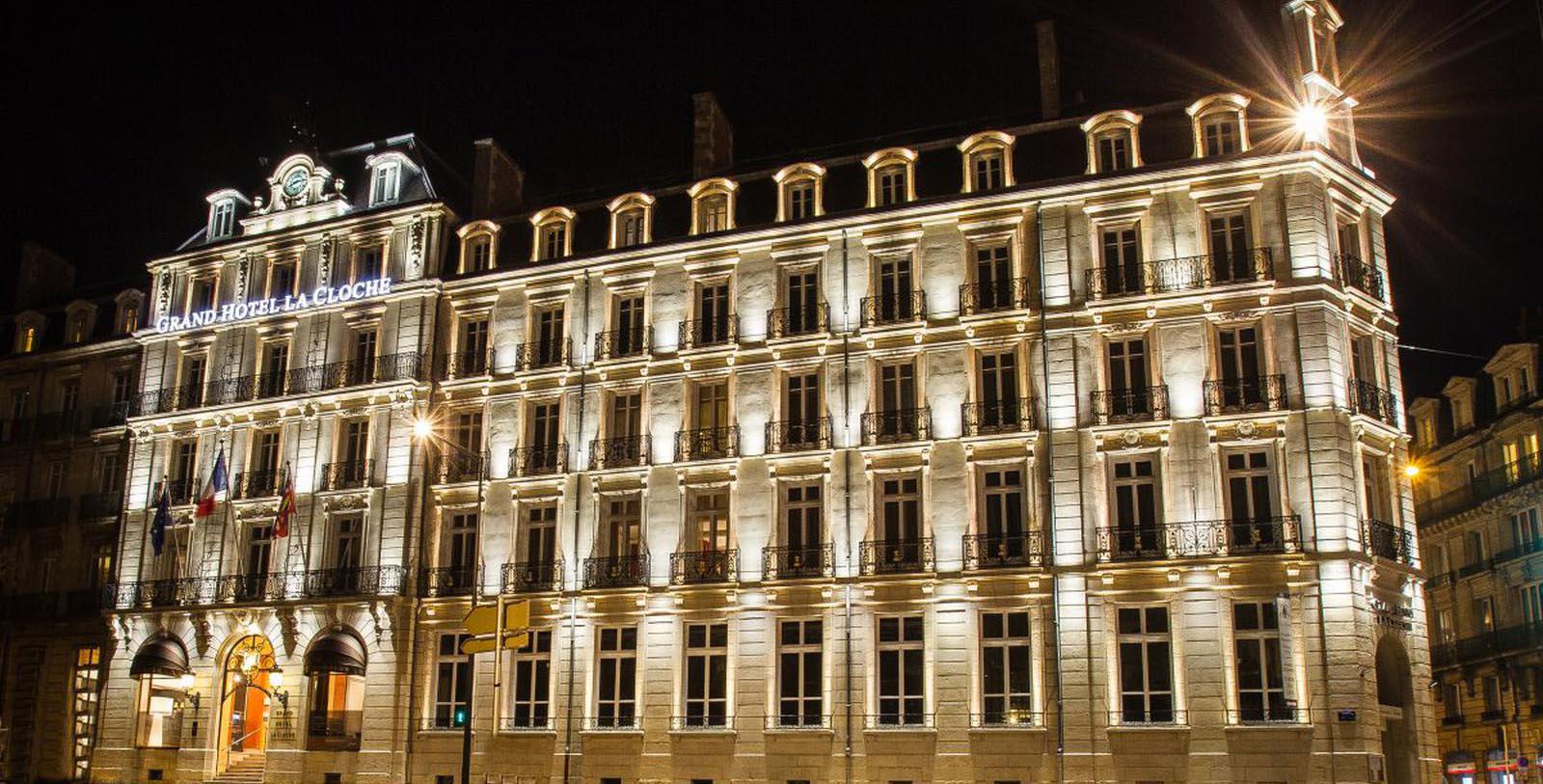Receive for Free - Discover & Explore eNewsletter monthly with advance notice of special offers, packages, and insider savings from 10% - 30% off Best Available Rates at selected hotels.
history
Discover the Grand Hôtel La Cloche Dijon - MGallery by Sofitel, which has been a beloved local landmark for nearly seven centuries.
Grand Hôtel La Cloche Dijon - MGallery by Sofitel, a member of Historic Hotels Worldwide since 2018, dates back to 1884.
VIEW TIMELINEA member of Historic Hotels Worldwide since 2018, Grand Hôtel La Cloche Dijon - MGallery by Sofitel was constructed during the historic reign of the United Kingdom’s famed Queen Victoria. The structure that constitutes the Grand Hôtel La Cloche has been as an iconic symbol in the center of Dijon for the better part of seven centuries. Sources from the 15th century first referenced the location, identifying it as the “ostelerie de la Cloiche.” However, the site did not become a hotel until the 1790s, when locals began referring to it as the “Hotel de Condé” in honor of the Prince de Condé. The hotel underwent another name change shortly thereafter, becoming the “Bell Hotel” during the French Revolution in an attempt to strip it of its royal affiliations. But in 1881, an enterprising hotelier named Edmond Goisset came to own the hotel. He decided to significantly overhaul the building’s appearance, initiating a series of extensive renovations with the help of a talented architect named Louis Belin. When the project ended some three years later, Goisset’s new hotel amazed all who saw it. Its remarkable golden bell accents, spacious lounge area, and marvelous dining-room chandeliers won over countless patrons. The hotel underwent additional construction work over the next thirty years, in which it received a new massive wing and several ornate skylights.
World War II marked the beginning of the hotel’s slow, somber decline. With the Fall of France in the summer of 1940, the German Army used the building as the shelter for one of its garrisons in Dijon. Their presence greatly harmed the hotel, as it was left in shambles once the Germans retreated back across the Rhine. Even after undergoing a serious facelift at the war’s conclusion, the hotel’s earlier clientele never returned in earnest. The development of the A6 motorway near the area was the final nail in its coffin. In 1973, the hotel closed its doors for the final time, with its staff auctioning off all of the furniture the following year. And had it not been for the desperate pleas of several local businesspeople, the building would have been demolished, too. Fortunately, enterprising hoteliers resurrected the site during the 1980s. They successfully reopened the building as the “Hotel La Cloche” to great acclaim. Around a decade later, the hotel joined the prestigious Sofitel brand, eventually joining its MGallery collection in 2013. Yet, the building would experience one more major transformation. Soon after its transition into the MGallery family, Sofitel subjected the entire structure to a massive renovation. Taking two years to complete, the location was reborn as the luxurious “Grand Hôtel La Cloche.” Today, the Grand Hôtel La Cloche continues on its storied legacy of providing world-class hospitality.
-
About the Location +
Located at the base of the graceful Côte d’Or hills, Dijon has been one of France’s preeminent cities for centuries. While perhaps best-known today for the mustard that bears its name, Dijon was a major European settlement throughout the Medieval Era. It first came into existence during the time of the Romans, existing as an important transportation hub known as the “Divio.” But by the height of the Middle Ages, the city—now known as “Dijon”—served as the capital for the regal Duchy of Burgundy. Duke Robert I of the Robertian dynasty specifically chose the settlement to function as the center of his realm, which at the time stretched from Toulon on the Mediterranean coast all the way north into the County of Auxerre. Dijon would subsequently flourish as the capital of the Burgundian dukes, gradually overseeing a dominion that eventually presided over the locations of present-day Belgium, Luxembourg, and the Netherlands. Great power and wealth was concentrated within the city, too, especially when the legendary Valois family acquired the duchy in the mid-14th century. (The House of Valois reigned as kings of France for several centuries, having inherited the throne from the Capetians upon the passing of King Philip III in 1285. The Capetians themselves were related to the Robertians.) Numerous cultural institutions debuted within Dijon at the time, including a monastery called the “Chartreuse de Champmol,” the Cathedral of Saint-Bénigne, and the Notre-Dame de Dijon. Yet, perhaps the greatest symbol of its prestige was the Palais des ducs de Bourgogne, which operated as the official royal residence for the Dukes of Burgundy and their respective families starting in the 1300s. Some of Burgundy’s most powerful nobles, including Philip the Bold and John the Fearless, were even interred inside the magnificent edifice.
Dijon continued to occupy a place of importance in France long after King Louis XI seized the duchy in 1477, making it an official province under the direct supervision of the crown. The city, thus, remained the capital of the region for a few more centuries, with the Burgundian parliament meeting regularly within its limits. (The title of “Duke of Burgundy” soon passed on to the Austrian Habsburgs, who nominally claimed suzerainty over the city throughout the Renaissance and Enlightenment eras.) Dozens of new buildings appeared in Dijon as such, like the renowned Université de Bourgogne in the 1720s. Even the illustrious Palais des ducs de Bourgogne experienced a spate of new construction, culminating with the opening of the Musée des Beaux Arts de Dijon toward the end of the century in 1787. (The palace had since become the hôtel de ville—or “town hall”—for the city proper.) Most of the original palace was thoroughly renovated and just a handful of its medieval architecture—including Tour Philippe le Bon-survived into the present. Dijon gradually lost its national influence in the years following the French Revolution, only to see its economic fortunes revitalized by the arrival of the railroads in the mid-19th century. The city has since retained its status as an important center for commerce and communication in France, featuring a diversified regional economy that specializes in the manufacture of pharmaceuticals, electrical equipment, and vehicles. Its amazing history has also made it a popular destination for international tourism, with its dense variety of historical landmarks attracting hundreds of thousands of people every year. In fact, the entire city center has recently been designated as a UNESCO World Heritage Site in 2015. Truly few other communities in France can claim as great a heritage than the city of Dijon.
-
About the Architecture +
The Grand Hotel La Cloche Dijon MGallery by Sofitel is among the finest examples of Belle Époque architecture in Dijon. This wonderful historic structure underwent an extensive renovation in the 1880s, in which the building began to adopt its modern appearance. Architect Louis Belin headed the project, who included remarkable golden bell accents, spacious lounge areas, and marvelous dining-room chandeliers into its design. A new massive wing and several ornate skylights were later added over the next thirty years. The architectural style of the Belle Époque was quite ubiquitous across France—specifically Paris—at the height of the Victorian Era. Belle Époque architectural actually drew its inspiration from a range of earlier forms that included Moorish Revival and Renaissance Revival-style architecture. More recent architectural styles also constituted aspects of Belle Époque architecture, such as the palatial designs of 17th and 18th century French châteaus. Perhaps the most famous style to emerge within the greater umbrella of Belle Époque architecture was that of Art Nouveau. Defined by its ornate interior designs, Art Nouveau was best represented by Hector Guimard’s wonderful Castel Béranger in 1898. The name “Belle Époque” specifically referred to time in European history marked by its technological advances, pristine artwork, and relative peace. While the Belle Époque is a historical period relevant to most Western countries, it specifically applies to France and the life of the French Third Republic (1870 – 1914). Belle Époque architecture was eventually phased out during the 1920s in favor of a new style known as “Art Deco.” Its emphasis on modernity seemed to better represent Western culture as it emerged from the aftermath of World War I.



























